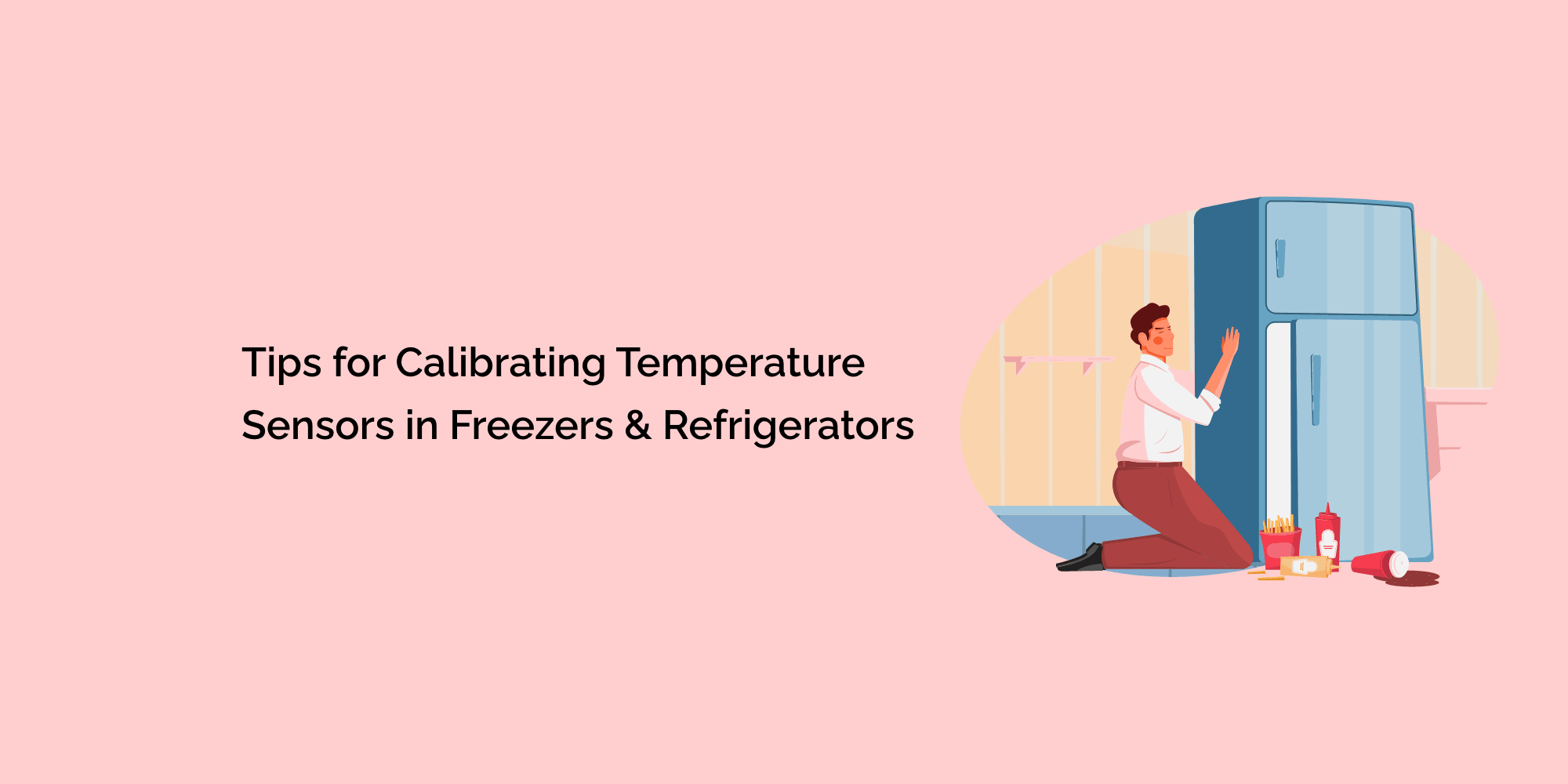Accurate temperature measurement is crucial for maintaining the quality and safety of perishable goods stored in freezers and refrigerators. Temperature sensors play a vital role in monitoring and controlling temperature levels in these appliances. However, over time, temperature sensors can drift or become inaccurate, leading to potential issues such as food spoilage or compromised product integrity.
In this blog, we will explore the importance of calibrating temperature sensors in freezers and refrigerators and provide practical tips for ensuring accurate temperature measurements.
Understanding Temperature Sensor Calibration:
Temperature sensor calibration is the process of adjusting and verifying the accuracy of temperature sensors to ensure precise and reliable temperature readings. Here's why it is important:
Definition and Purpose:
Calibration involves comparing the readings of a temperature sensor to a reference standard to determine any deviation or error. The purpose of calibration is to correct sensor inaccuracies and ensure accurate temperature measurements.
Calibration Standards:
To maintain reliable and traceable measurements, it is essential to adhere to calibration standards and regulations. Calibration standards, such as those provided by the National Institute of Standards and Technology (NIST), ensure consistent and accurate calibration practices.
Signs that Calibration is Needed:
Regular calibration of temperature sensors is crucial to ensure accuracy. Here are some signs that indicate calibration is needed:
Inconsistent Readings:
If you notice significant variations in temperature readings from the sensor, it may indicate a need for calibration. Inconsistent readings can lead to incorrect temperature control and potential product spoilage.
Deviation from Setpoint:
If the temperature sensor consistently reads different values compared to the desired setpoint, it is an indication that the sensor may require calibration. Deviations from the setpoint can compromise product quality and safety.
Verification of Accuracy:
Regularly verifying the accuracy of temperature sensors through calibration is essential. By periodically calibrating sensors, you can ensure they are providing accurate and reliable temperature measurements.
Selecting Calibration Equipment:
Choosing the right calibration equipment is crucial for accurate calibration results. Consider the following factors:
Calibration Thermometers:
Calibrated thermometers serve as reference instruments for sensor calibration. Select high-quality, calibrated thermometers that provide accurate and reliable temperature measurements.
NIST Traceability:
Ensure that the calibration equipment used for sensor calibration is traceable to NIST standards. NIST traceability ensures the accuracy and reliability of the calibration process.
Equipment Maintenance:
Regular maintenance and calibration of reference instruments are essential. Periodically calibrate and maintain the accuracy of the reference thermometers to ensure reliable calibration results.
Calibration Procedures for Temperature Sensors:
Proper calibration procedures are vital for accurate temperature measurements. Follow these steps:
Preparation:
Ensure that the freezer or refrigerator is at a stable and known temperature before beginning the calibration process. Allow sufficient time for temperature stabilization.
Removing the Sensor:
Safely remove the temperature sensor from the appliance, ensuring that no damage occurs during the process. Follow the manufacturer's instructions for removing the sensor properly.
Calibration Process:
Connect the temperature sensor to the calibrated reference thermometer. Compare the readings of the sensor to the reference thermometer. Note any discrepancies and determine the adjustment needed.
Adjustments and Recalibration:
If the temperature sensor readings deviate from the reference thermometer, make necessary adjustments to align the sensor's readings with the reference. Repeat the calibration process if required until accurate readings are achieved.
Reinstallation and Validation:
After calibration, carefully reinsert the calibrated sensor back into the freezer or refrigerator. Validate its accuracy by monitoring the temperature readings to ensure they align with the desired setpoint.
Frequency of Calibration:
The frequency of temperature sensor calibration depends on various factors:
Industry Guidelines:
Adhere to industry guidelines and regulatory requirements regarding the frequency of temperature sensor calibration. Some industries may have specific standards and recommendations for calibration intervals.
Application-Specific Considerations:
Consider the criticality of the stored products and the regulatory requirements for calibration. High-risk applications may require more frequent calibration to ensure product safety and quality.
Monitoring Sensor Performance:
Continuously monitor the performance of temperature sensors and adjust the calibration frequency accordingly. If you notice consistent deviations or inconsistencies, it may be necessary to increase the frequency of calibration.
Documentation and Record-Keeping:
Proper documentation and record-keeping are essential for calibration processes. Consider the following:
Calibration Reports:
Document the calibration procedures, results, and any adjustments made during the process. Include information such as the date of calibration, sensor identification, and the individuals responsible for calibration.
Record-Keeping:
Maintain a record of calibration dates, sensor identification, and other relevant details. This record helps track the history of sensor calibration and assists in compliance with industry standards.
Training and Best Practices:
Implementing best practices and providing proper training can enhance the effectiveness of temperature sensor calibration:
Employee Training:
Ensure employees responsible for sensor calibration receive appropriate training. Train them on proper calibration techniques, adherence to calibration procedures, and the importance of accurate temperature measurements.
Calibration Schedule and Reminders:
Establish a calibration schedule to ensure regular and timely calibration. Set reminders to prompt employees to perform calibration activities within the specified intervals.
Auditing and Quality Control:
Periodically conduct audits and quality control checks to verify calibration accuracy and compliance. This helps identify any gaps in the calibration process and ensures consistent and reliable temperature measurements.
Conclusion:
Calibrating temperature sensors in freezers and refrigerators is crucial for maintaining accurate temperature readings and ensuring product quality and safety. By understanding the calibration process, selecting appropriate calibration equipment, and following best practices, businesses can achieve reliable and traceable temperature measurements.
Regular calibration, proper documentation, and employee training contribute to accurate temperature control and help businesses comply with industry standards. Prioritizing temperature sensor calibration is key to preventing issues such as product spoilage and compromised quality, ultimately safeguarding consumer health and maintaining regulatory compliance.








